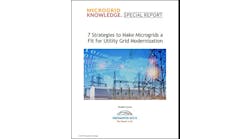The much-hyped utility death spiral may be just that – much hyped. Still, the patient better make some changes to keep up good health.
That’s the message in “The Future of the Utility Industry and the Role of Energy Efficiency,” a new report by the American Council for an Energy-Efficient Economy.
The death spiral refers to a phenomenon that occurs when utilities lose sales because of declining demand. This is now occurring as energy efficiency and distributed generation gain traction on the grid. As the theory goes, utilities will need to raise rates to make up for lost revenue and cover the cost of new infrastructure. This will cause more customers to buy less energy, eventually sending the utility into an economic tailspin.
But the numbers don’t support this dire forecast, says the report by Steven Nadel and Garrett Herndon. Even in a worst-case scenario calculated by ACEEE – a 10 percent drop in energy use from 2013-2040 – the industry would not experience a death spiral.
Still, this would represent a “very significant” decline for an industry that has historically relied on load growth to fuel profits, the report said.
“Our key finding is that a utility industry with substantially increasing sales is unlikely, but a death spiral is also unlikely,” said the report.
To keep utilities healthy and service strong, the industry and regulators need to rethink the best ways to earn a return on investments. What might these be?
After examining more than 60 reports and interviewing about a dozen industry experts, ACEEE offers as vision of how to prepare utilities for what is likely to be a bumpy transition to a new mode of operation.
“Our report recommends that utilities offer optional energy-related services to their customers, including energy efficiency and technical help and financing for larger customers installing and operating high-efficiency combined heat and power systems,” Nadel said in a recent blog about the report. “Such efforts can contribute to utility profits, reduce customer bills (since consumption is lower) and also provide services that customers value, positioning the utilities to offer additional services.”
The report also identifies what not to do. If you’re in a hole, don’t dig deeper, Nadel said.
“If sales are level or declining, then utilities and regulators need to be careful of investing too much in new generation, transmission and distribution,” he wrote.
The report offers some optimism for an industry that has been mired in worry about the future. Even as demand for their product falls, utilities can still earn a profit, customers can still enjoy reliable service at reasonable cost, and the environment can benefit – if utilities and regulators get the rules right now, says the ACEEE report.





